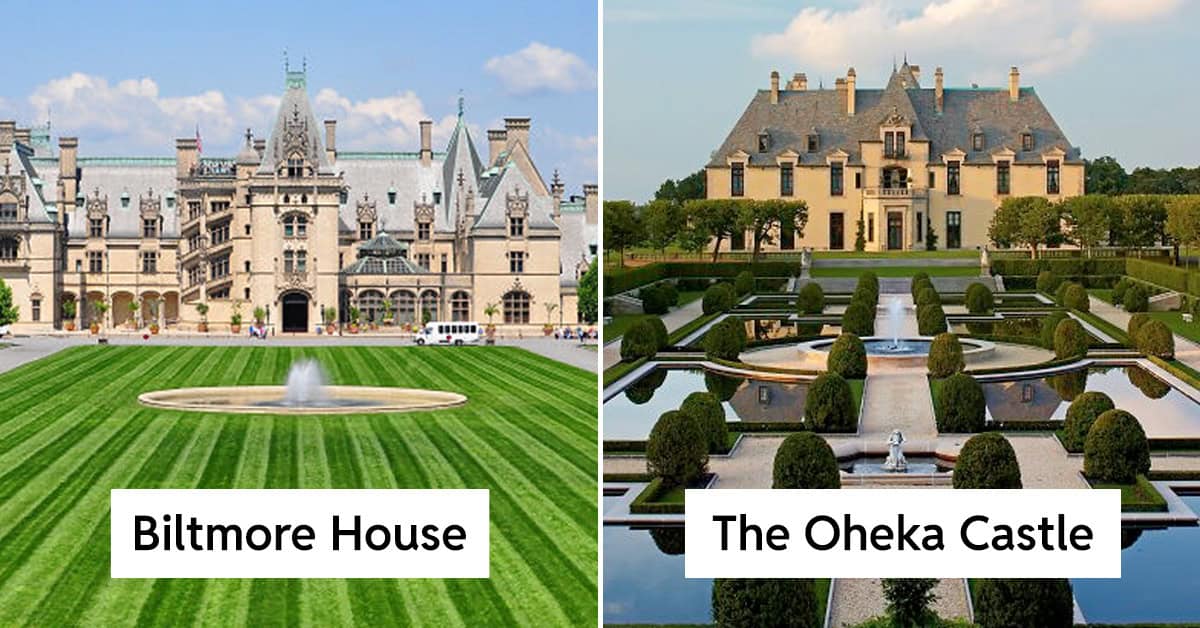30 Historic Homes That Highlight America’s Architectural Past
I’ve always thought architecture tells history better than any textbook. When I see an old house, it feels less like a building and more like a time capsule of design.
Some of these homes are pure craftsmanship, with details that make you wonder how they pulled it off without power tools or YouTube tutorials. They’re proof that America’s story is written in wood, brick, and stone, and these historic houses still carry that architectural story today.
1. Villa Vizcaya
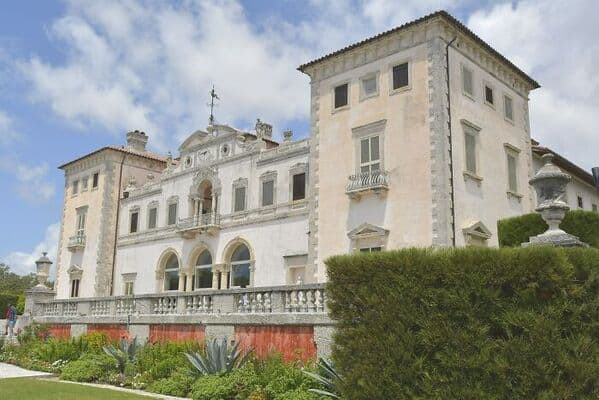
Businessman James Deering built Villa Vizcaya for $15 million in Miami, Florida, between 1914 and 1922. Inspired by Italian Renaissance and Venetian architecture, Deering enlisted the help of 1,000 workers to bring his home to life. He only got to enjoy living in it during winters from 1916 to 1925 before his untimely passing. Today, the villa and its sprawling gardens are owned by Miami-Dade County, and they’re open to the public as the Vizcaya Museum and Gardens.
2. The Oheka Castle
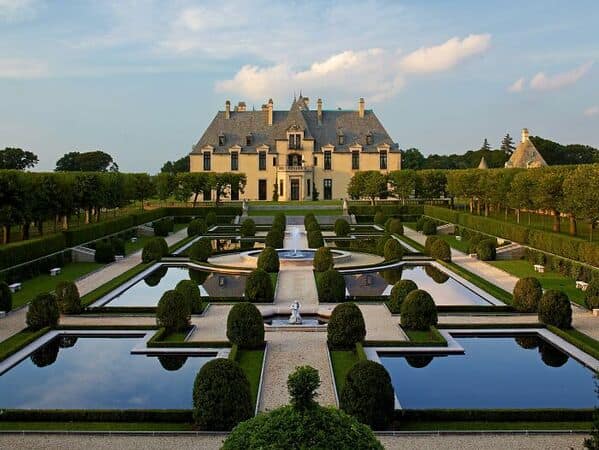
Located in New York, Oheka Castle is regarded as the second-largest private residence in America. Otto Hermann Kahn, investor and philanthropist, built the family home between 1914 and 1919. Oheka underwent extensive renovations over the years and was listed on the National Register of Historic Places in 2004. Now, the 127-room mansion operates as a lavish wedding venue and hotel.
3. The Harriet Tubman Home
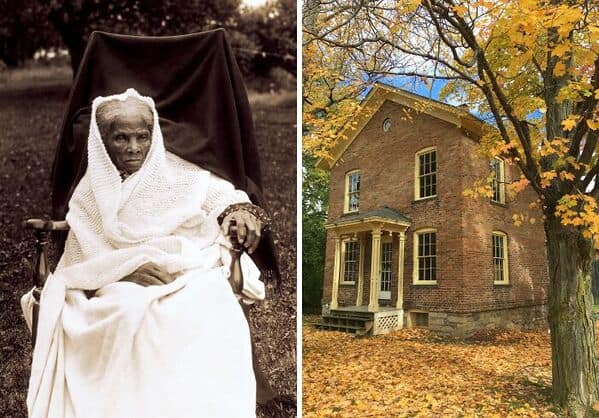
From 1859 to 1913, Harriet Tubman lived in a house in New York City that she’d purchased from Frances Adeline Seward. In 1880, the original wood-framed home burned down and was replaced by a new brick home. Over a decade after Tubman’s passing, the house became vacant and was eventually demolished after another 16 years. In 1953, it was rebuilt in hopes of becoming a historic site, national park, and public attraction. By 2017, the Harriet Tubman home was labeled part of the National Historic Park.
4. Biltmore House
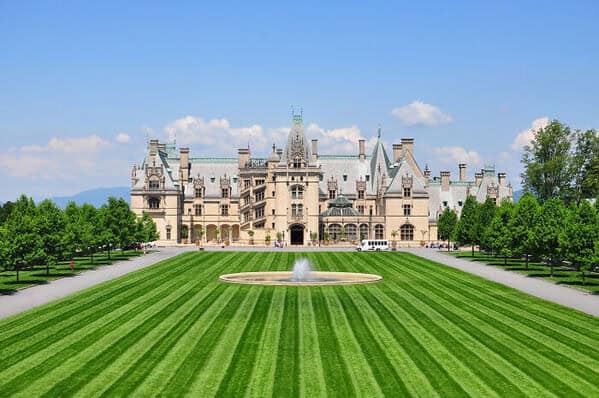
George Vanderbilt built Biltmore House alongside architect Richard Morris Hunt and landscape architect Frederick Law Olmsted in Asheville between 1889 and 1895. With an 8,000-acre estate and 250 rooms, it’s considered the largest privately owned home in America. Today, the estate is still owned by the Biltmore family and now has a winery, hotel, restaurants, and even shops.
5. Fallingwater
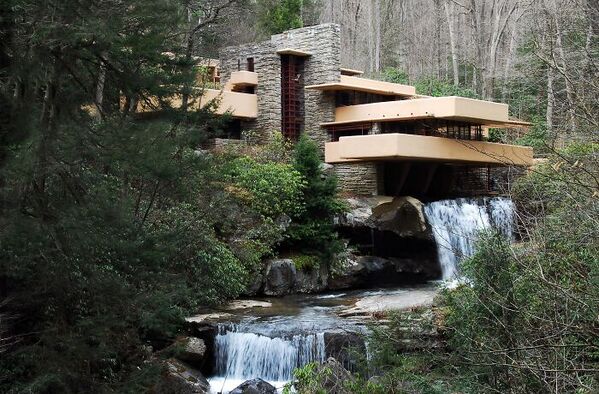
This house museum in Pennsylvania, with a collection of over 1,000 objects, was designed by architect Frank Lloyd Wright for Edgar J. Kaufmann Sr. The modern-style building was inspired by Japanese architecture and constructed over an actual waterfall. In 2019, the UNESCO World Heritage Committee declared Fallingwater a world heritage site, and now, it welcomes visitors from across the globe.
6. The Mount Vernon Estate Mansion
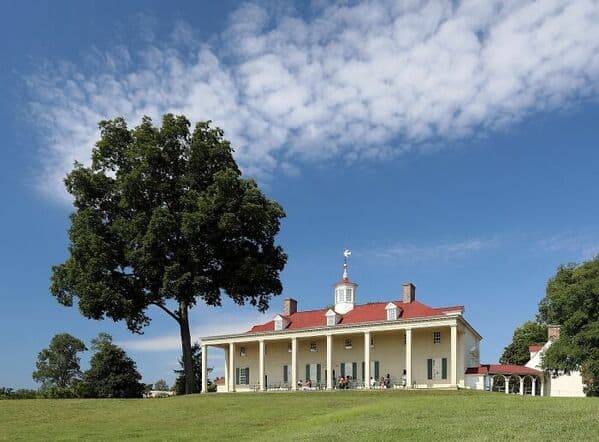
Built in Virginia by Augustine Washington in 1734, Mount Vernon Estate became George Washington’s residence for the rest of his life. The 21-room Palladian-style house was expanded by Washington first in the 1750s, then again in the 1770s. In 1858, the estate was taken over by the Mount Vernon Ladies’ Association, and by 1960, it was designated a National Historic Landmark. Today, Mount Vernon is open to the public for several daily tours.
7. The Bayou Bend Mansion
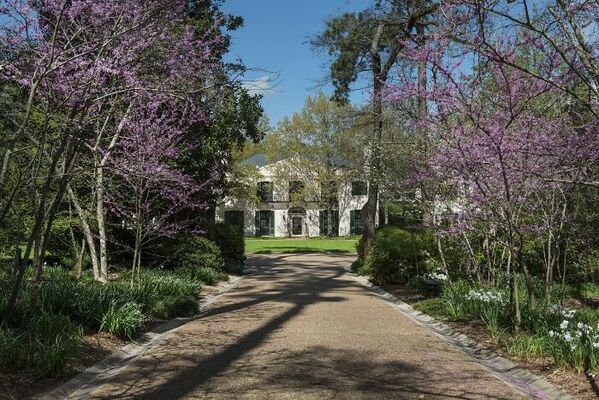
Bayou Bend was built in Texas for philanthropist Ima Hogg between 1927 and 1928. The mansion was designed by architect John F. Staub using 18th-century Georgian and Spanish Creole design principles. In 1979, the home was listed in the National Register of Historic Places. Today, it’s owned by the Museum of Fine Arts and operated as a house museum with a collection of American art and paintings.
8. Ca’ D’zan Mansion
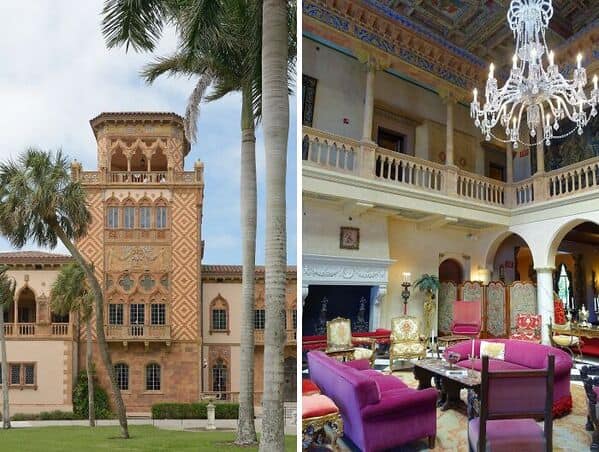
This Mediterranean Revival residence in Florida was built in the 1920s for American circus magnate John Ringling and his family. Owen Burns designed the 56-room home with inspiration from multiple architectural styles, like Venetian Gothic and Italian Renaissance. In 1946, Ca’ D’zan opened to the public as part of the State Art Museum of Florida, and by 1982, it was listed as a contributing property to the Caples’-Ringlings’ Estates Historic District.
9. The Mount
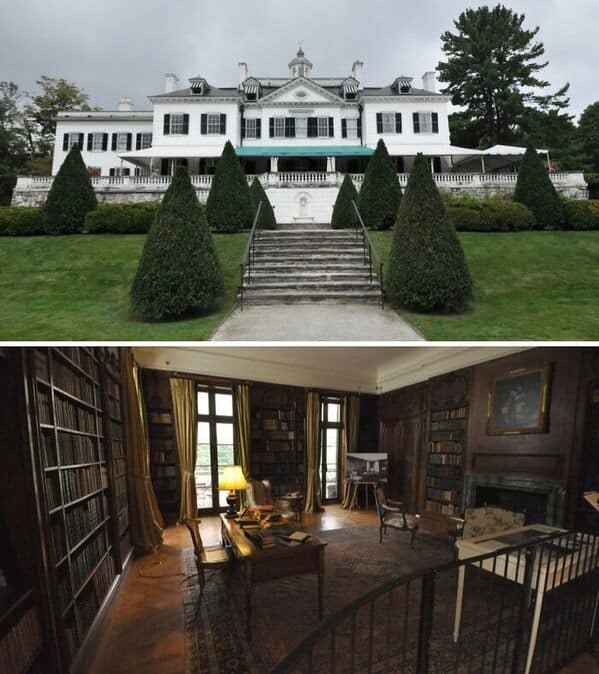
This country house in Massachusetts was the home of the famous American author Edith Wharton from 1902 to 1911. She designed it herself, taking inspiration from the 17th-century Belton House in England while incorporating influences from classical Italian and French architecture. The Mount was declared a National Historic Landmark in 1971 and is open to the public as a cultural center and museum today.
10. The Lockwood-Mathews Mansion
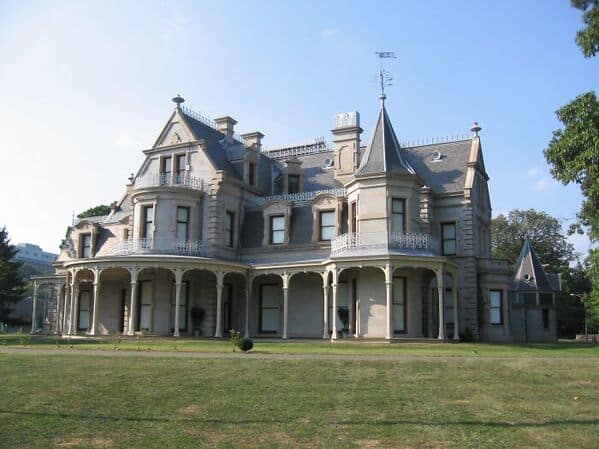
The Lockwood–Mathews Mansion in Connecticut was built for banking mogul LeGrand Lockwood from 1864 to 1868. Designed by architect Detlef Lienau, the opulent 62-room mansion is considered one of the finest surviving Second Empire-style country houses in America. In 1978, it was declared a National Historic Landmark, and in 2008, the master plan for its restoration was completed.
11. The Robie House
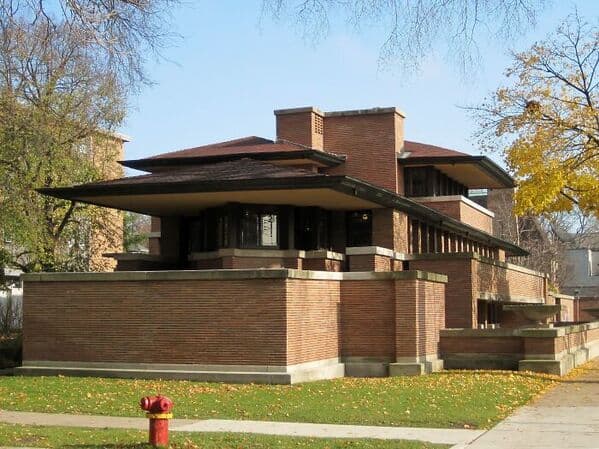
This Prairie-style house in Chicago, Illinois, was designed by architect Frank Lloyd Wright in 1910 for Frederick Carlton Robie and his family. Part of the construction of the Robie House was a collaboration between interior designer George Niedecken and associate architects Hermann von Holst and Marion Mahony. Today, the residence is owned by the University of Chicago and operates as a museum.
12. The Mark Twain House
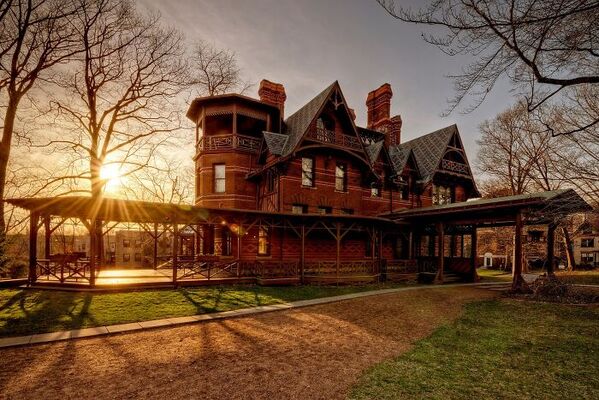
Built in Connecticut, this Victorian home was made for author Mark Twain, who lived in it until 1891. Architect Edward Tuckerman Potter designed the 25-room house in the American Gothic style. Twain and his family eventually sold the house in 1903, and by 1962, it was declared a National Historic Landmark. Over four decades later in 2003, it became a museum showcasing Twain’s life’s work.
13. The Elms Mansion
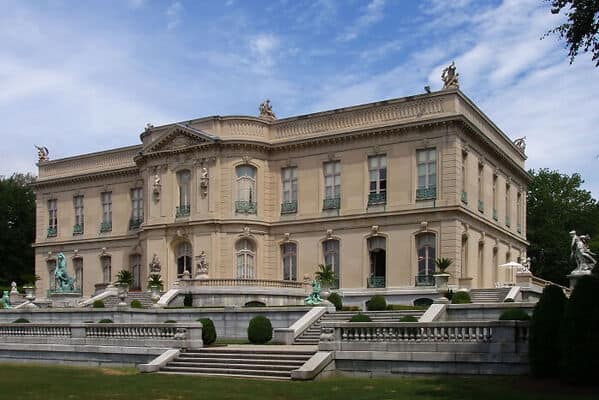
Located in Rhode Island, this large mansion was built for coal tycoon Edward Julius Berwind from 1899 to 1901. Architect Horace Trumbauer took inspiration from the 18th-century Chateau d’Asnieres to design the landscape and gardens. Over three decades after it was purchased and opened to the public by the Preservation Society of Newport County in 1962, The Elms was designated a National Historic Landmark.
14.
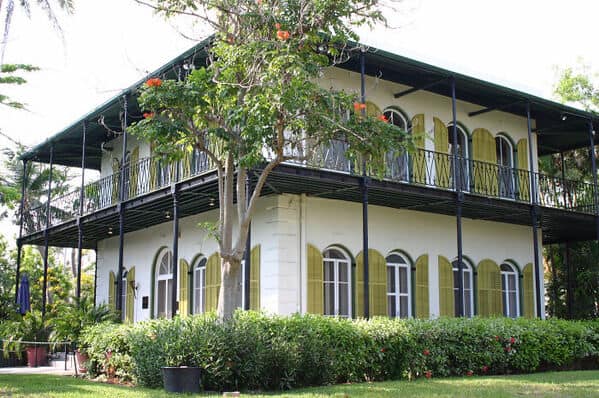
15. The Molly Brown House
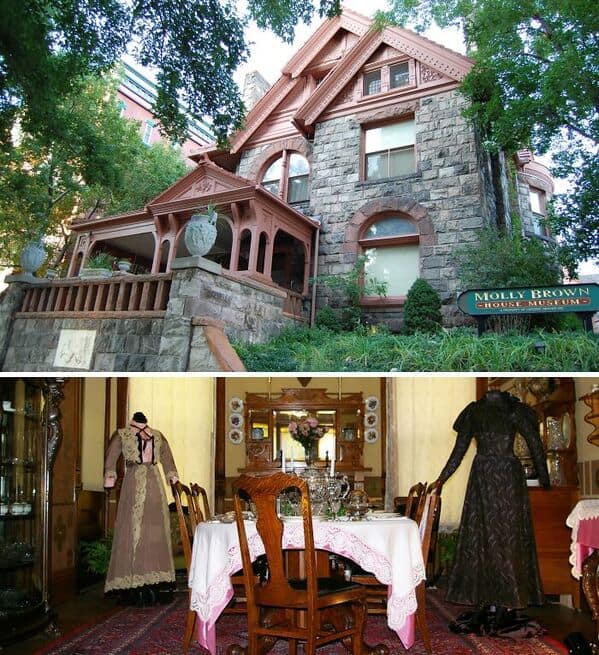
Located in Colorado, the Molly Brown House was home to philanthropist Margaret Brown from 1894. Brown survived the sinking of the Titanic and dedicated most of her life to helping the other survivors. In 1972, the house was listed on the National Register of Historic Places and became a public museum with around 10,000 of Brown’s artifacts and pieces.
16. The Hearst Castle
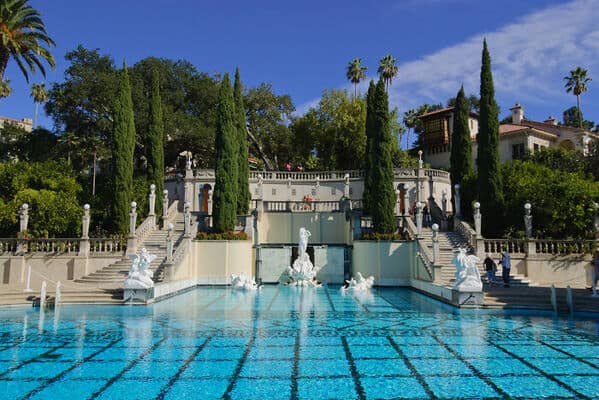
This hilltop estate was built in California for publishing mogul William Randolph Hearst between 1919 and 1947. With the help of architect Julia Morgan, the home was designed in Italian Renaissance style and featured immaculate gardens and grounds. It underwent continual changes till Hearst’s passing in 1947. Now, Hearst Castle is a National Historic Landmark that’s open to the public as a museum with exceptional art pieces, antiquities, and the renowned Neptune Pool.
17. The Breakers Mansion
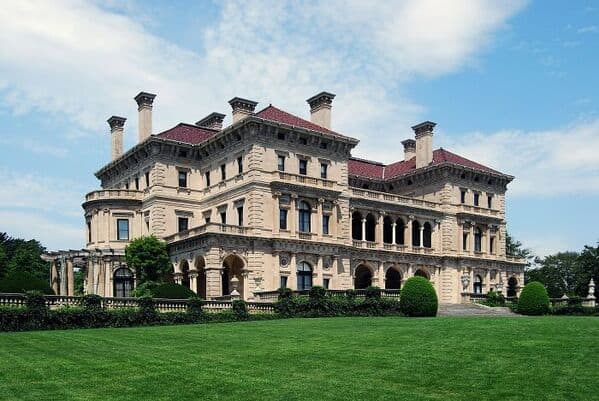
This Gilded Age mansion was built in Rhode Island for Cornelius Vanderbilt II between 1893 and 1895. It was designed by architect Richard Morris Hunt in the Renaissance Revival style and featured 70 rooms across five floors. In 1994, the Breakers mansion was designated a National Historic Landmark and is now operated by the Newport Preservation Society as a museum open to the public.
18. The Pabst Mansion
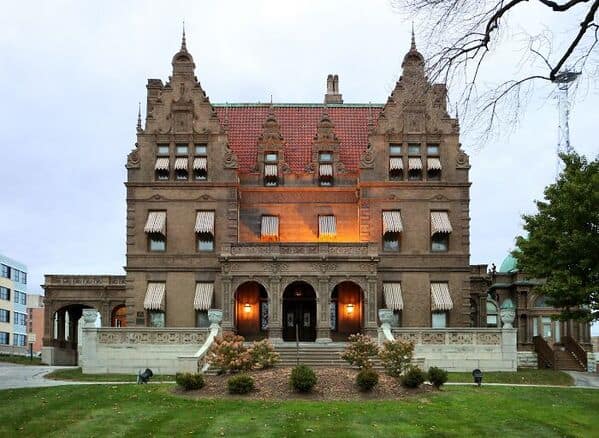
This 1892 mansion was built in Milwaukee for Captain Frederick Pabst, founder of the Pabst Brewing Company. The Pabst mansion was designed in the Flemish Renaissance Revival style by architect George Bowman Ferry and took two whole years to perfect. Before it was purchased by the Archdiocese of Milwaukee in 1908, Pabst and his family called the mansion home. By 1998, it was sold to Wisconsin Heritage Inc., which opened it to the public for daily tours.
19. Monticello Mansion
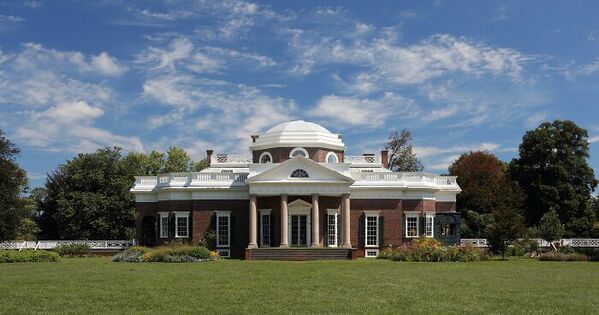
Monticello was the residence and plantation of the third president of the United States, Thomas Jefferson. Built in Virginia from 1768, the home was designed by architect Andrea Palladio using Italian Renaissance and neoclassical design principles. Jefferson continued to work on Monticello till his passing in 1826. Today, it’s a designated National Historic Landmark due to its architectural and historic significance.
20. The Lyndhurst Mansion
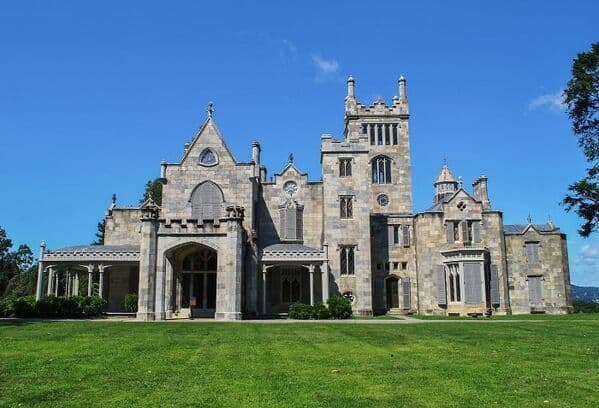
Designed by Alexander Jackson Davis in New York in 1838, this Gothic Revival mansion was owned by three different people before it was designated a National Historic Landmark in 1966. Its first owner was New York City mayor William Paulding Jr., the second was George Merritt, and the last was Jay Gould. In 1961, Anna Gould, Jay’s daughter, donated the mansion to the National Trust for Historic Preservation, which opened it up to the public.
21.

22.
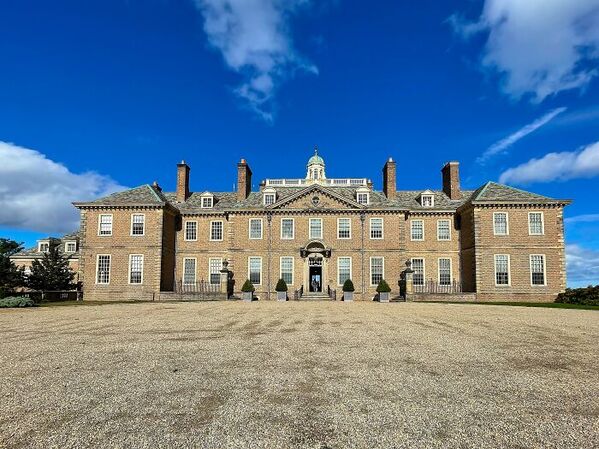
23. The Old Governor’s Mansion
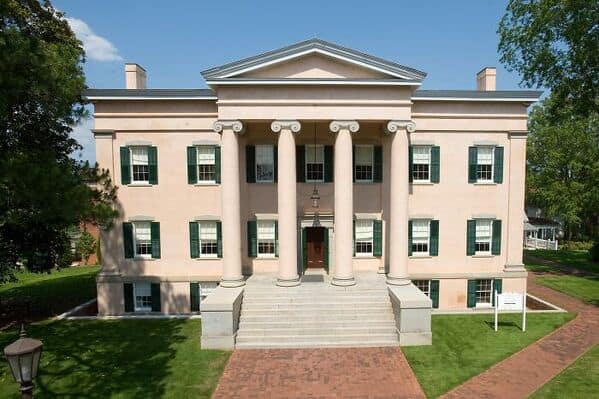
This Greek Revival-style house was designed and built by Charles B. Cluskey in 1839 and served as Georgia’s executive mansion until 1868. Two decades later, the house became a university property, and by 1973, it was designated a National Historic Landmark because of its architecture. Now, it operates as an accredited museum of the American Alliance of Museums.
24.
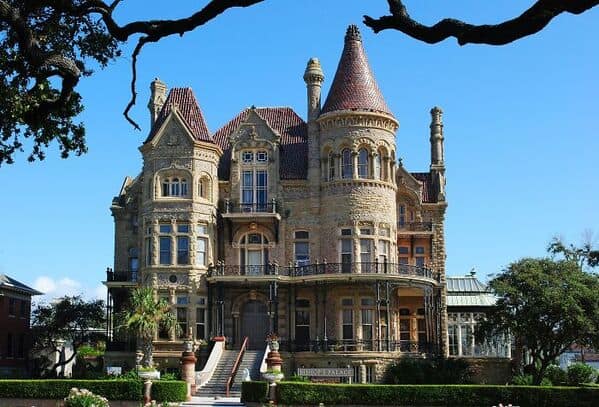
25. The Old Westbury House
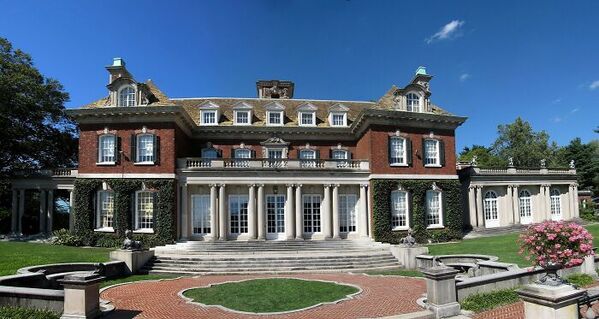
This Carolean Revival-style house in New York was designed by British designer George A. Crawley and American architect Grosvenor Atterbury from 1903 to 1906. It was once the home of lawyer and businessman John S. Phipps. The sprawling mansion comprising 23 rooms and expansive grounds was converted into a museum in 1959, and today, it’s open to the public.
26. The Olana House
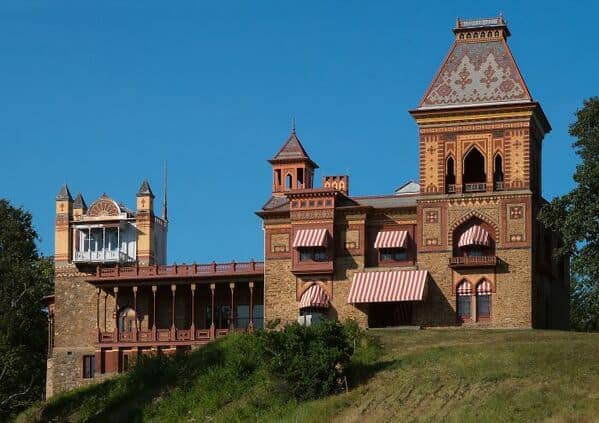
With the help of architect Calvert Vaux, painter Frederic Edwin Church designed his home on a hilltop in Hudson, New York. Inspired by his travels in Beirut, Jerusalem, and Damascus, Church was determined to incorporate Middle Eastern design with Victorian architecture to create a unique style. Since becoming a National Historic Landmark in 1965, the Olana house museum exhibits Church’s work and art collection.
27. The Paul Revere House
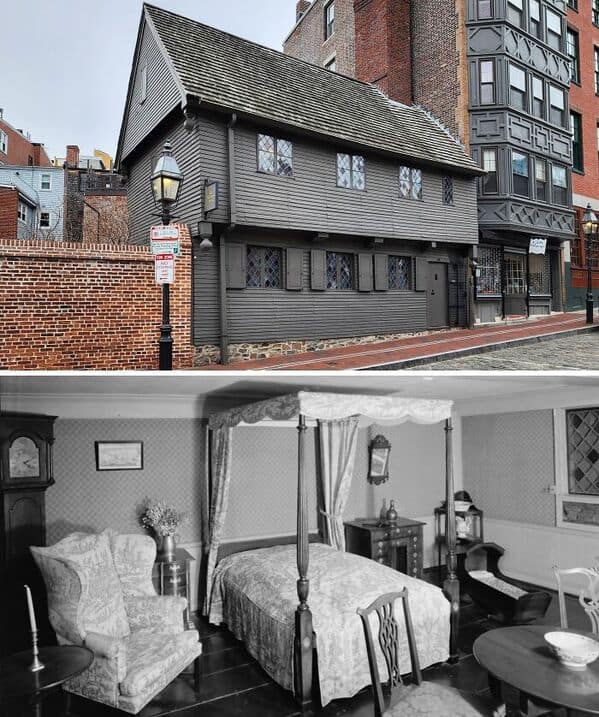
Built in 1680, this home is the oldest surviving house in Boston and was owned by Paul Revere from 1770 to 1800. In 1902, architect Joseph Everett Chandler oversaw the restoration of the house, and in 1908, its doors were opened to the public as one of the first historic house museums in America. Today, the Paul Revere house operates as a non-profit museum.
28. Drayton Hall
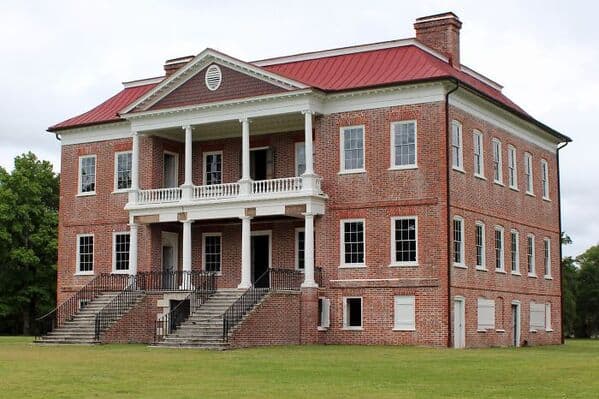
Located in Charleston, South Carolina, this 18th-century plantation house was built for John Drayton Sr. after he purchased the property in 1738. It is known for its Palladian architecture and for being the only house of its kind to survive both the Revolutionary and Civil wars. In 1960, the house was declared a National Historic Landmark.
29. Taliesin West
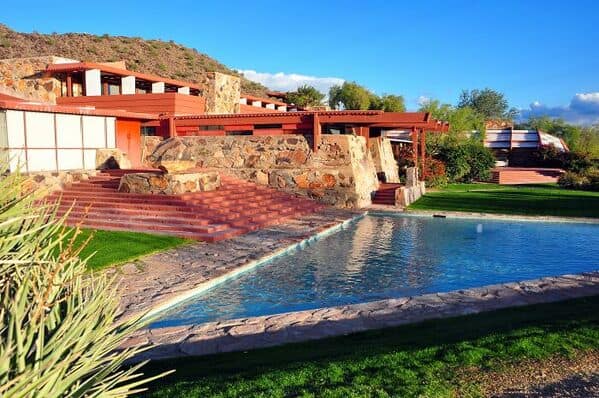
Designated as a National Historic Landmark and a World Heritage Site, Taliesin West is an architectural studio and home in Arizona that belonged to architect Frank Lloyd Wright. Its structures and grounds were designed and built by Wright and his apprentices from 1937. Today, Taliesin West is managed by the Frank Lloyd Wright Foundation, which opened the home to the public for tours and other events.
30.

This mansion was built for Chester Congdon between 1905 and 1908 in Minnesota. The 39-room historic home was a collaboration between architect Clarence H. Johnston Sr., landscape designer Charles W. Leavitt, and interior designer William A. French. In 1979, Glensheen opened to the public, and it’s now operated as a museum by the University of Minnesota.

